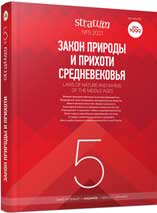Погребения в шкурах лося и северного оленя в железном веке и раннем средневековье в Северной Европе: этно-археологический аспект
Buried in the Elk and Reindeer Hides in the Iron Age and the Early Middle Ages in Northern Europe: an Ethno-Archaeological Aspect
Author(s): Nataliia R. Mykhailova, Tuija Kirkinen, Kristiina MannermaaSubject(s): History, Archaeology, Ancient World, Middle Ages, 6th to 12th Centuries, 13th to 14th Centuries
Published by: Издательский дом Stratum, Университет «Высшая антропологическая школа»
Keywords: Finland; Karelia; Iron Age; Middle Ages; ritual; cemeteries; burials; skins;
Summary/Abstract: Archaeological evidence of the use of animal hides in burials have recently become known in the Late Iron Age and the Middle Ages (800—1300 AD) in Finland and Karelia (Russia). The purpose of the article is to interpret the ritual of wrapping the dead in hides of Eurasian elk and reindeer. For the first time, the authors use a combination of innovative methods of archaeozoological analysis to study the remains of fur, and the method of ethnoarchaeological reconstruction to study the burial rite.Wrapping bodies in hides of wild animals is a widespread long-term tradition, which was practiced in Northern Europe by the Stone Age hunters. This funerary rite was supposed to ensure the “transformation” of a person into an ancestor animal. Reminiscences of hunting religious beliefs were preserved in the ideology of Northern Europe after the transition to agriculture.
Journal: Stratum plus. Археология и культурная антропология
- Issue Year: 2021
- Issue No: 5
- Page Range: 295-308
- Page Count: 14
- Language: Russian
- Content File-PDF

